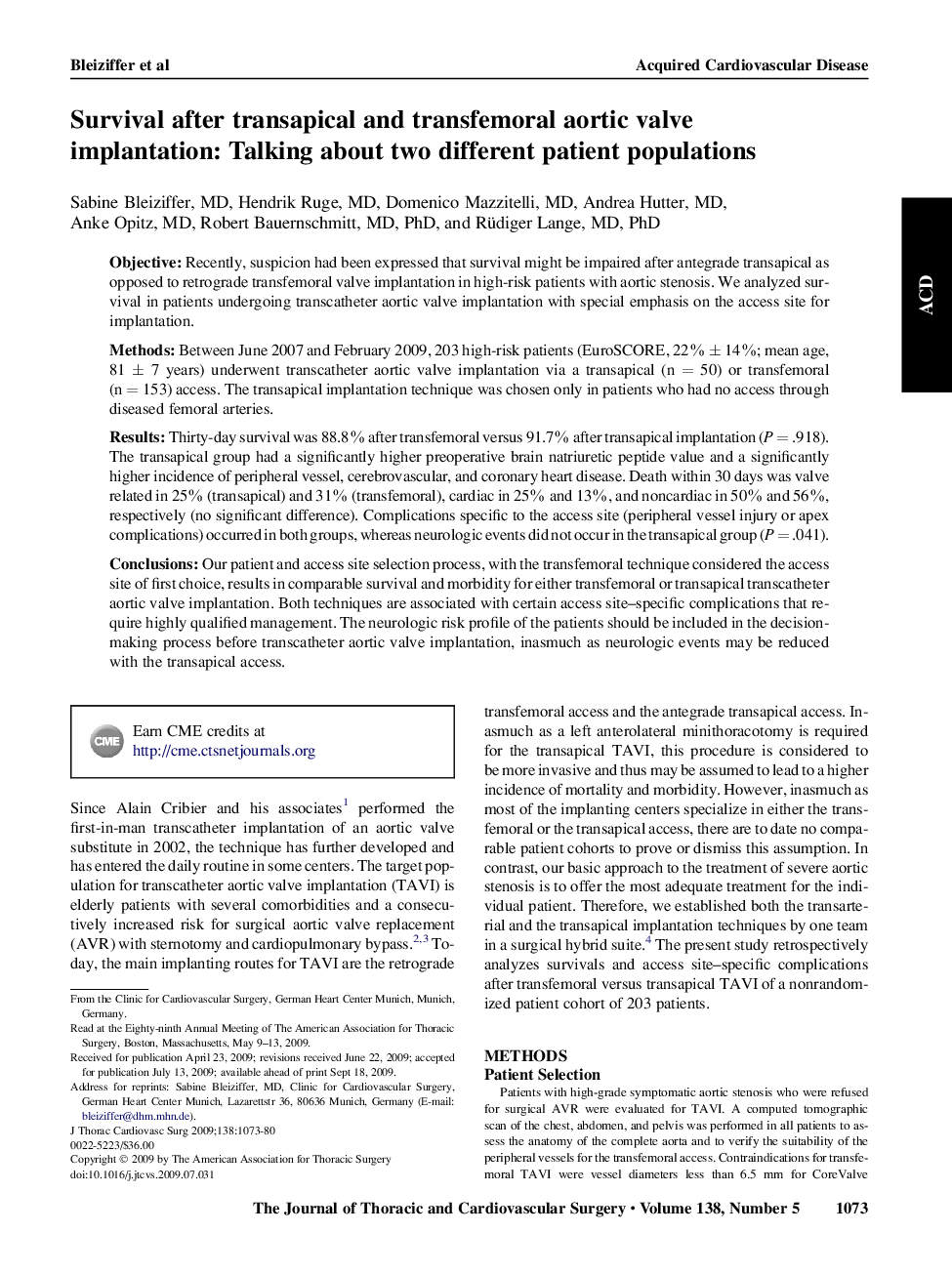| کد مقاله | کد نشریه | سال انتشار | مقاله انگلیسی | نسخه تمام متن |
|---|---|---|---|---|
| 2985229 | 1578668 | 2009 | 8 صفحه PDF | دانلود رایگان |

ObjectiveRecently, suspicion had been expressed that survival might be impaired after antegrade transapical as opposed to retrograde transfemoral valve implantation in high-risk patients with aortic stenosis. We analyzed survival in patients undergoing transcatheter aortic valve implantation with special emphasis on the access site for implantation.MethodsBetween June 2007 and February 2009, 203 high-risk patients (EuroSCORE, 22% ± 14%; mean age, 81 ± 7 years) underwent transcatheter aortic valve implantation via a transapical (n = 50) or transfemoral (n = 153) access. The transapical implantation technique was chosen only in patients who had no access through diseased femoral arteries.ResultsThirty-day survival was 88.8% after transfemoral versus 91.7% after transapical implantation (P = .918). The transapical group had a significantly higher preoperative brain natriuretic peptide value and a significantly higher incidence of peripheral vessel, cerebrovascular, and coronary heart disease. Death within 30 days was valve related in 25% (transapical) and 31% (transfemoral), cardiac in 25% and 13%, and noncardiac in 50% and 56%, respectively (no significant difference). Complications specific to the access site (peripheral vessel injury or apex complications) occurred in both groups, whereas neurologic events did not occur in the transapical group (P = .041).ConclusionsOur patient and access site selection process, with the transfemoral technique considered the access site of first choice, results in comparable survival and morbidity for either transfemoral or transapical transcatheter aortic valve implantation. Both techniques are associated with certain access site–specific complications that require highly qualified management. The neurologic risk profile of the patients should be included in the decision-making process before transcatheter aortic valve implantation, inasmuch as neurologic events may be reduced with the transapical access.
Journal: The Journal of Thoracic and Cardiovascular Surgery - Volume 138, Issue 5, November 2009, Pages 1073–1080